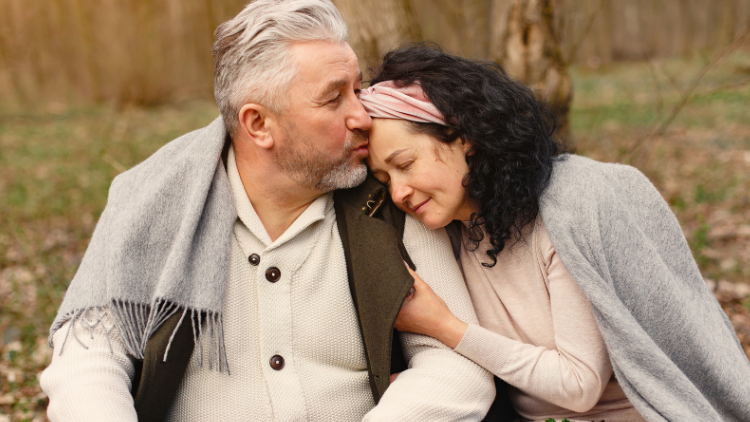How Attachment Styles Shape Our Love Lives
One of life’s most profound desires is to belong and connect with others. This innate longing stems from both an evolutionary necessity for survival and an emotional need for closeness and intimacy.
Yet, as much as we seek out smooth-sailing relationships, we often find ourselves navigating through rough waters. A familiar pattern seems to repeat in our relationships, and the key to understanding this phenomenon lies in our attachment styles.
What are Attachment Styles?
Attachment styles are essentially emotional blueprints that are created during childhood.
John Bowlby, a renowned psychiatrist and psychoanalyst, conducted extensive research on the bond between children and their primary caregivers (usually parents). He discovered that these initial bonds significantly influence the ways we develop adult relationships – whether they be romantic, friendships, or professional.
How Attachment Styles develop
In our early years, the way our caregivers relate to us forms the way we experience closeness, intimacy, love, and affection. It also influences the way we think about ourselves.
As children, we’re heavily reliant on our caregivers for emotional support and survival. Consistent nurturing leads to the development of a secure attachment style, making us confident that we’re loveable and that love is available to us when we need it.
However, if for whatever reason our emotional needs are inconsistently met, we may develop coping behaviours. These range from becoming overly anxious and needy to gain attention or distancing ourselves to become self-reliant – both resulting in insecure attachment styles.
The different types of Attachment
There are 4 different types of attachment that fall along a spectrum of either anxiety or avoidance.
Secure Attachment: People with secure attachment have low levels of anxiety and avoidance. They find it easy to form relationships and believe in the mutual exchange of support and vulnerability.
Anxious or Preoccupied Attachment: These individuals exhibit high levels of anxiety. They feel a constant need for approval and fear abandonment. In relationships, they may become clingy and demanding.
Avoidant or Dismissive Attachment: People with this style exhibit high levels of avoidance. They view themselves as independent, often distancing themselves when a relationship becomes intimate.
Fearful-Avoidant Attachment: A combination of high anxiety and high avoidance, individuals with this style want closeness but find it difficult to trust. Their relationships are often quite stormy and challenging.
How the different Attachment Styles show up in relationships
Those with secure attachment are usually at ease in relationships. They have confidence in the relationship’s growth and don’t rely on external validation. While they’re comfortable and content in a relationship, they also don’t fear being on their own.
In contrast, individuals with anxious attachment, termed "Waves" by Stan Tatkin in his book ‘Wired for Dating’, are often restless without a relationship and tend to move quickly from one relationship to another. They seek validation from their partners, are sensitive to their partner’s actions, and have difficulty regulating their emotions.
People with avoidant attachment, or “Islands” as Stan Tatkin calls them, see themselves as independent and with a strong sense of self. They may desire relationships, but as intimacy deepens, they feel trapped and pull away.
Lastly, those with fearful-avoidant attachment, also known as island-wave, are often confused and exhibit a mix of traits from anxious and avoidant styles. They desire intimacy but struggle to maintain it due to their mistrust and difficulty in managing emotions. This hot and cold attitude is a result of growing up in a home environment that was highly unpredictable.
The cat and mouse of attraction
If you’ve read to this point, there’s a high likelihood that you don’t belong to the roughly 50% of people who fall into the securely attached group of people. It’s likely then that your attachment style is playing a big role in your stress or unhappiness in your relationships.
Interestingly, individuals with secure attachment styles often find each other, whereas anxious types tend to attract avoidant types and vice versa. This results in a cyclical pattern where the anxious partner pursues and the avoidant partner distances themselves, reflecting a cat and mouse style dance that can continue for a long time.
Help with overcoming insecure attachment
Recognising your attachment style is pivotal for growth and building healthier relationships.
But remember, these styles are not set in stone. You can evolve from an insecure attachment style to a more secure one. And equally, a secure person may become insecure perhaps because of a traumatic event or the loss of a loved one.
The motto I stand by and share with all my clients is this…
“You must first become The One, before you will attract The One”
And here are some ways that you can start this journey of change and become more securely attached:
Take my Attachment Style Quiz to help you understand your style
Get support to resolve past trauma
Work on communication (verbal and non-verbal)
Develop self-love
Develop relationships with someone with a secure attachment style
Understanding your attachment style is like finding a treasure map to navigate the complex waters of relationships. So, if you’re interested in learning what it would take to create deeper intimacy and learn to overcome issues related to trust, people pleasing, and fear of commitment, then I’d love to chat with you.
Take this opportunity to book a free Breakthrough Coaching Call with me, where we’ll review your results from my Attachment Style quiz and put together a plan to help you become more securely attached in the next 90 days, so you too can find The One and build a healthy, loving relationship.




